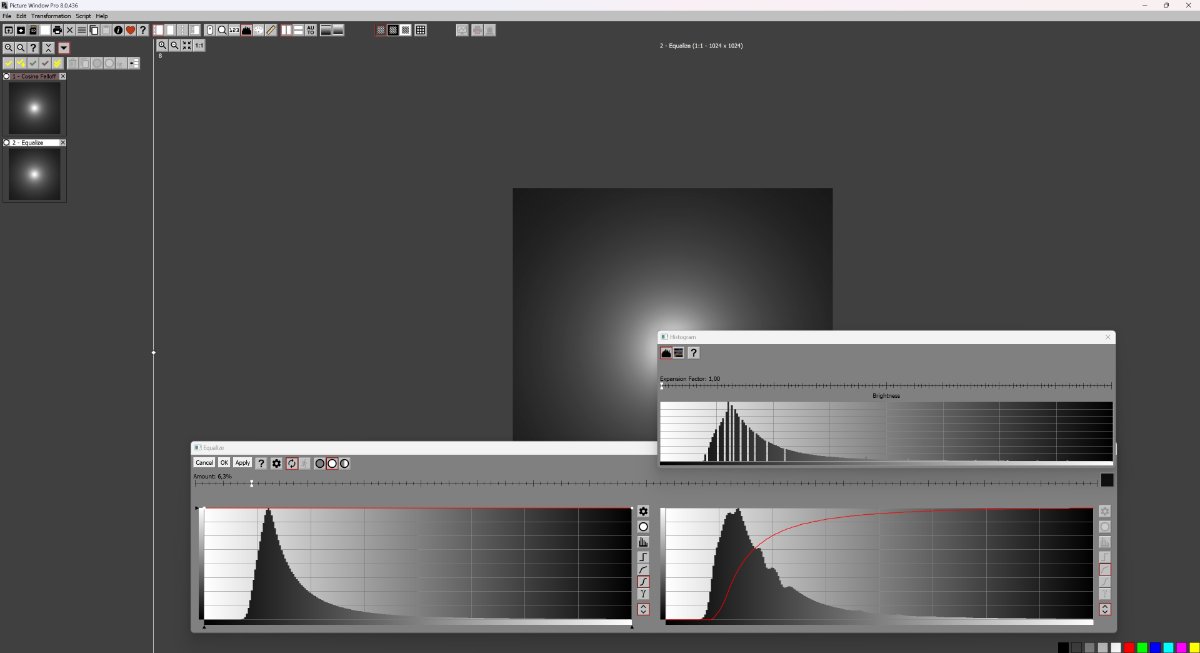Because the output image has banding before it is blended with the input image.
Thank you. I was under the impression that because the input was continuous, the blended output should also be.
I found with further investigation that the output histogram is indeed continuous in the transformation dialog box, but not in the histogram mode display.
Equalize transform: Output Curve
The output curve displays the curve that Equalize applies to the input image to create the output image. The histogram in the background is the histogram of the output image.
Histogram mode : Input/Output Image Histograms
When a transformation dialog box is open, the histogram is computed from either the input or the output image. If the display tool bar at the top of the dialog box is set to show just the input image, the histogram is computed from the input image. Otherwise the histogram is computed from the output image
See screenshot below, where there is a discrepancy between the two histograms.
Shouldn't both histograms be similar, because they both represent the preview/output image ?

- 2024-06-19 Equalize results on Cosine falloff - histograms discrepancy.jpg (55.01 KiB) Viewed 2290 times